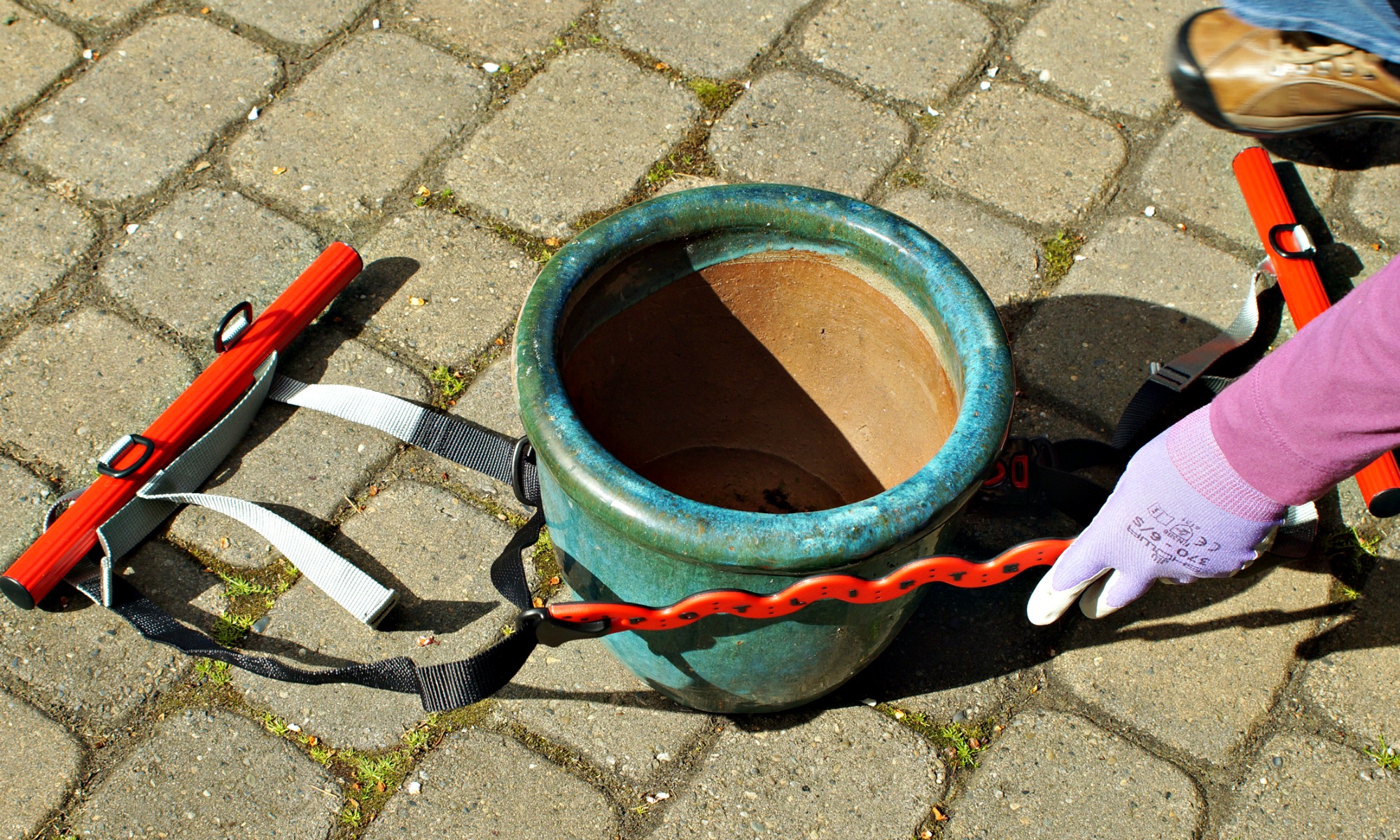Containers, raised beds and window boxes can be useful as yard accents or for a renter’s mobility, but they are most often chosen for their easy maintenance reputation or for limited garden spaces, such as decks and porches. No lawn to mow, few if any weeds to pull, and usually at a height that requires little bending. Sounds perfect!
The real truth is that all of the above comes with its own heavy issues sooner or later. Just getting a newly purchased empty clay pot from the car to the deck can take a hand truck and two strong people. I maintained containers for a landscaper for one year and found that was the heaviest lifting I’ve done in decades of gardening. My ideal container would have straight sides and be galvanized metal, but that begins to sound like an old garbage can. The reality is that most pots are thick, heavy, glazed clay in an oh-so-lovely round vase shape.
Before adding any soil to a new pot or container, check it for adequate drainage holes. Ask at the hardware store for a special electric drill bit used on pottery if you need to make more. Consider protecting the drainage holes to reduce the amount of soil lost during watering. I put a small square of old window screen material over the holes; some place an inverted broken piece of a terra cotta pot over the drains.
If you will be rotating your outdoor container for sun exposure or moving it short distances seasonally, put it on a plant caddie. Spend a little more money for one with a locking wheel as they are also usually rated for higher weight loads. My mother had two non-locking plant caddies on her smooth apartment deck and they would sail around, and sometimes tip over, in a stiff wind. A locally available caddie is made by Down Under.
The gardener’s physical challenges come in 2-4 years when a plant clump or tree must be removed from its pot, or depleted potting soil needs replacing. Put a tarp on the ground around the container and have a large plastic bag or can nearby for the removed material. Your best friend will be a garden knife or Hori Hori tool, the subject of a future blog post. I’ve used my dad’s old fishing knife, a keyhole saw, a pruning saw, and my small floral shovel for the removal job. Cut through the pot-bound roots to make a square around the plant to be removed, then lift out of the pot. If this is a large and heavy tree, consider enlisting a neighborhood teenager to do the lifting, then ask your strong helper to carry the bag of new potting soil to a patio chair placed next to your pot.
If this is a medium-to-large container used for perennials, consider filling the bottom half with straw (not hay) or a heavy plastic bag filled with foam peanuts. Try to slide your new bag of soil to the lip of the pot, make a slit in the bag, and ease the soil into the pot.
To move a heavy or filled container, the PotLifter grabs well but requires two people who are able to lift. It costs about $30 but a homemade version could be made rather easily from online instructions. This looks like a piece of mountain climbing equipment but is simply two very supple rubber collars on adjustable strapping. Slide the collars around the pot, tighten the strap, and adjust the handles to the heights of the two people doing the lifting. Then you and your buddy lift the pot onto the locked plant caddie or crab-walk it to a nearby location. This rig will also enable you to move large rocks and stumps around the yard.
When lifting, use these three rules to avoid back injury: 1) Place your body as close to the heavy item as possible. 2) Bend at the knees. 3) Keeping a straight back, lift using the power of your leg and arm muscles.
If a utilitarian container is all you need, a great alternative to lightweight plastic containers are the new porous fabric pots ranging in size from 5 to 200 gallons. They regulate heat and air very well for vegetables, fruit, annuals, herbs and trees. They are inexpensive, can be used for many seasons, and actually look fairly nice in black or tan. Smart Pots can be found online.
I hope you’ll be lifting safely, use wheels as possible, and enjoy many years with your beautiful and bountiful containers!
Vivian Mizuta is a native Puget Sounder who grew up with gardening parents. She’s been an occupational therapist and Skagit County master gardener, and loves to try any tool or technique that will make gardening pleasant and easier. She and her husband, along with their Havanese dog Ghilli, have been busy renovating their 1960s garden in West Seattle. Tuesday Tools & Tips is her bi-weekly blog series about ergonomic garden tools and tips on using them, to make gardening easier on our bodies so we can do it well into our aging years.





